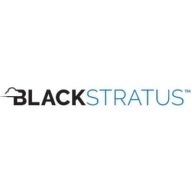

Splunk Enterprise Security and SIEMStorm are competitive solutions in the security information and event management category. Splunk Enterprise Security appears to have the upper hand for organizations prioritizing advanced analytics due to its extensive threat detection capabilities.
Features: Splunk Enterprise Security provides real-time threat intelligence, an extensive library of analytics, and customizable dashboards, emphasizing analytic depth and flexibility. SIEMStorm, known for integrated threat intelligence and automated response, offers a comprehensive security posture suitable for budget-conscious needs.
Ease of Deployment and Customer Service: Deploying Splunk Enterprise Security typically demands significant resources, including technical expertise and global support through professional services. SIEMStorm's deployment is more straightforward, catering to smaller organizations with a focus on accessible guidance and responsive support.
Pricing and ROI: Splunk Enterprise Security involves a higher setup cost but justifies this with its advanced and scalable features, offering substantial ROI for those investing in it. SIEMStorm provides a more competitive pricing structure, appealing to budget-limited environments while delivering good ROI through efficient resource utilization.

SIEMStorm is our premier network security solution for cloud service providers and other MSSPs. A single appliance gives you flexible threat visualization and mitigation tools across distributed networks and other multi-tenant environments. Easy to set up right out of the box, SIEMStorm integrates with your existing network and security hardware to provide the following advanced features:
Advanced architecture with full failover and n-tier redundancy to meet complex regulatory compliance, business continuity and risk management needs
Multi-tenancy support to segregate customer accounts and silo files and applications for privacy and data integrity
Real-time attack visualization to identify zero-day attacks using sophisticated metrics based on rules-based, vulnerability, statistical and historical correlations
Vulnerability correlation to integrate data from CVE-compliant intrusion detection systems, eliminating false positives and freeing up your team to focus on real threats
Unparalleled visibility in distributed networks to correlate activity in individual customer environments, identifying hidden threats, suspicious trends and other potentially dangerous behavior
Sophisticated reporting tools for ISO, PCI, HIPAA, SOX and other compliance standards
Splunk Enterprise Security is widely used for security operations, including threat detection, incident response, and log monitoring. It centralizes log management, offers security analytics, and ensures compliance, enhancing the overall security posture of organizations.
Companies leverage Splunk Enterprise Security to monitor endpoints, networks, and users, detecting anomalies, brute force attacks, and unauthorized access. They use it for fraud detection, machine learning, and real-time alerts within their SOCs. The platform enhances visibility and correlates data from multiple sources to identify security threats efficiently. Key features include comprehensive dashboards, excellent reporting capabilities, robust log aggregation, and flexible data ingestion. Users appreciate its SIEM capabilities, threat intelligence, risk-based alerting, and correlation searches. Highly scalable and stable, it suits multi-cloud environments, reducing alert volumes and speeding up investigations.
What are the key features?Splunk Enterprise Security is implemented across industries like finance, healthcare, and retail. Financial institutions use it for fraud detection and compliance, while healthcare organizations leverage its capabilities to safeguard patient data. Retailers deploy it to protect customer information and ensure secure transactions.
We monitor all Security Information and Event Management (SIEM) reviews to prevent fraudulent reviews and keep review quality high. We do not post reviews by company employees or direct competitors. We validate each review for authenticity via cross-reference with LinkedIn, and personal follow-up with the reviewer when necessary.